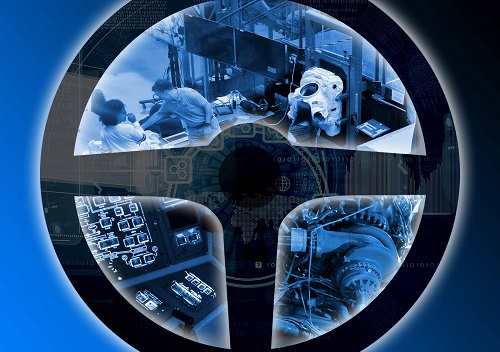Proposed Automotive Technologies That Could Make Cars Safer and More Efficient

The competition amongst automakers is at its fiercest as consumers have become pickier than ever. This is a good thing as these carmakers are in a wild race to develop the finest technological innovations – all that will eventually benefit the average car buyer of the future. These innovations include safety and efficiency – two key selling points.
The safety aspect is great when it comes to saving lives on the road, which is a problem even in today’s day and age – over a million die from car crashes annually. Then, there’s the less pressing issue of rising fuel prices, for which the electric vehicle is the obvious solution. However, there lies the problem of EV charging times, which are a lot to deal with.
The following piece looks at some tech advancements that look at both these issues (one more than the other):
Communication for Safety
It is a known fact that the cyclist and the motor-vehicle driver do not get along. The former is considered by the latter to be a nuisance for the road that has no regard for their own safety and for the rules of the roadway. As a result, there are countless crashes between the two entities on the road every year; all because one couldn’t see the other.
Audi, being the innovators that they are, plans to fix this problem using a system that can change the world of motoring. They’ve come up with C-V2X, which is a short form of cellular vehicle-to-everything, a communication system. This is a setup that will give alerts to the cyclist that there’s a car heading toward them, and it will warn the driver of the car about the cyclist too.
But that’s not where it ends though as the C-V2X offers a lot more. Not only will it warn cars and bikes about each other, but it also will also give alerts about any sort of pedestrians or anyone on the sidewalk including any busy construction workers. Staying on the subject of workers; they too will be informed if there’s a vehicle that could be potentially dangerous to them.
Drivers will also be alerted of any upcoming traffic lights so that the signals aren’t disobeyed and safety is compromised. Even blemishes on the road such as potholes will be enough to notify the drivers so that they make take measures to avoid them accordingly. The possibilities with this are endless as even school buses will be alerted for any dangers while dropping children.
Love reading about vehicles and parts supply is a pain? Fret not as you can get a reliable supply of parts for all kind of vehicles at https://sts-global.com/auto-parts.
New Safety Software
As we move forward on the topic of road traffic safety, we pay homage to a company that is celebrated for the term – Volvo. The Swedish company’s innovations in this regard and their concern for pedestrians and vehicle occupants beyond profiteering have won all sorts of consumers around the world over.
Nowadays, they’re working on creating a bunch of software that can make cars even safer than they are today with all of their fancy equipment. They are developing ways in which the driver of the car can be alerted of any threats that are presumably outside the vehicle. Furthermore, the company is trying to identify drunk drivers in their cars to prevent any accidents beforehand.
We will be able to see these changes in the upcoming fleet of Volvo EVs. It is great that while the company is working to make more efficient vehicles with lower running costs, it is also trying to maintain its reputation as a bunch of wizards that put vehicular safety and security above and beyond everything else.
NASA’s EV Charging Possibilities
We always hear about NASA developing stuff that is far beyond the reach of the average Joe. However, they may be on to something big with their subcooled flow boiling setup. This is a technology that when used in charging tech, can speed up the charging process by quite a bit to make it a lot more efficient than it is today.
While today’s tech allows cars to be charged in the maximum shortest time of 30 minutes, the aforementioned concept allows them to be charged in just about 5 minutes. This is because it is able to provide a much higher stream of electric current, while also absorbing most of the heat that goes wasted in these systems.





